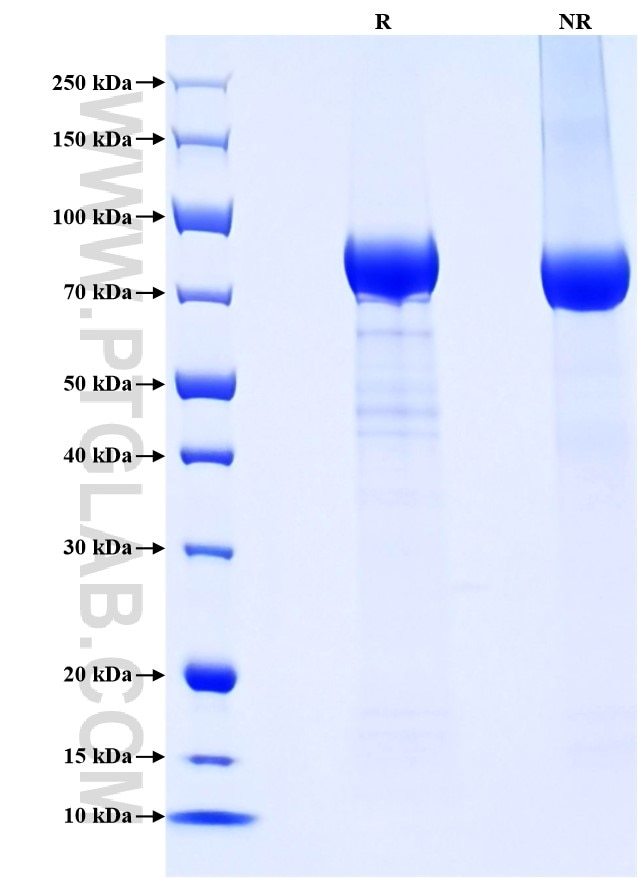Recombinant Human VE-cadherin/CD144 protein (His Tag)
Species
Human
Purity
>90 %, SDS-PAGE
Tag
His Tag
Activity
not tested
Cat no : Eg1200
Validation Data Gallery
Product Information
| Purity | >90 %, SDS-PAGE |
| Endotoxin | <0.1 EU/μg protein, LAL method |
| Activity |
Not tested |
| Expression | HEK293-derived Human VE-cadherin protein Asp48-Gln599 (Accession# P33151-1) with a His tag at the C-terminus. |
| GeneID | 1003 |
| Accession | P33151-1 |
| PredictedSize | 63.4 kDa |
| SDS-PAGE | 70-90 kDa, reducing (R) conditions |
| Formulation | Lyophilized from 0.22 μm filtered solution in PBS, pH 7.4. Normally 5% trehalose and 5% mannitol are added as protectants before lyophilization. |
| Reconstitution | Briefly centrifuge the tube before opening. Reconstitute at 0.1-0.5 mg/mL in sterile water. |
| Storage Conditions |
It is recommended that the protein be aliquoted for optimal storage. Avoid repeated freeze-thaw cycles.
|
| Shipping | The product is shipped at ambient temperature. Upon receipt, store it immediately at the recommended temperature. |
Background
Vascular endothelial cadherin (VE-cadherin), also known as Cadherin-5 (CDH5) or CD144, is a member of the type II classical cadherin family of cell adhesion proteins. VE-cadherin is expressed specifically in endothelial cells and mediates homophilic adhesion in the vascular endothelium. VE-cadherin plays a role in the organization of lateral endothelial junctions and in the control of permeability properties of vascular endothelium. VE-cadherin has also been shown to be required for angiogenesis.
References:
1. Brasch J. et al. (2011). J Mol Biol. 408(1):57-73. 2. Breier G. et al. (1996). Blood. 87(2):630-41. 3. Wallez Y. et al. (2006). Trends Cardiovasc Med. 16(2):55-9. 4. Vestweber D. (2008). Arterioscler Thromb Vasc Biol. 28(2):223-32.

